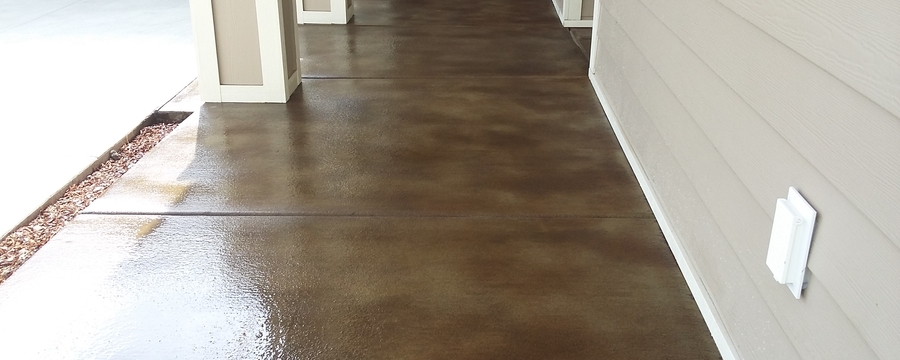CONCRETE DYES & STAINS
Concrete "dyes" take many different forms and compositions and can be used on both residential and commercial concrete applications, including sound/retaining walls, bridges, countertops, floors,[1] etc.
Early concrete dyes consisted of generic printing inks that were dissolved in mild solutions of alcohol and applied to concrete surfaces to add a wide array of color to plain gray concrete. When alcohol-based dyes are exposed to sunlight, the color either lightens or fades out completely. Therefore, alcohol-based dyes were more prevalent in interior applications where direct sunlight or other forms of ultraviolet (UV) lighting was not present.
Manufacturers later began dissolving the same printing inks in different carriers, such as acetone, lacquer thinner and other solvents, hoping to achieve increased penetration levels. In addition, UV inhibiting agents were added to new dyes to help with the UV instability issues. However, slight fading (5-8% per year) still occurs when the dye is exposed to direct sunlight.
Colored concrete can be obtained from many ready mix concrete companies and many have color charts available.
Acid staining is not a dyeing or pigment-base coloring systems, but a chemical reaction. A mixture of water, mineral salts and a slight amount of muriatic acid is applied to the concrete surface. This chemical reaction with the existing minerals (primarily lime) in the concrete over a period of one to four hours creates new earth tone colors on the concrete surface. The concrete surface is later scrubbed to remove excess stain and neutralized by a basic solution of ammonia and water or baking soda (less likely to cause whiting later) to help raise the ph level back to normal level. Due to inconsistencies in the surface level of concrete floor, acid staining creates a variegated or mottled appearance that is unique to each slab. The color penetration ranges from 1/16 to 1/32 of an inch. Older exterior concrete surfaces may not color as well as interior surfaces because the environment has leached or percolated out the mineral content. As well, any exposed aggregate (rocks) in worn concrete will not accept staining.
Chemicals commonly used in acid staining include Hydrochloric acid, Iron chloride and Sodium bicarbonate.

